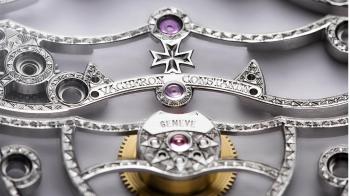If there’s one complication that embodies the 2000s, it really is the tourbillon. Between its official invention in 1801 and the end of the 1990s, Mr Breguet’s innovation remained discreet and incidental; simply one of many other ways of achieving better timekeeping. A look at the prize-winning entries from the firms that generally carried off the gold medals in the Concours d’Observatoire competitions in the 19th and 20th centuries confirms as much: scarcely any featured a tourbillon. Indeed, tourbillons were at that time difficult to design, manufacture, adjust, and keep reliable. But by the 2000s, they had come to embody the revival of high-end watchmaking. As the new millennium dawned, tourbillons underwent something of a metamorphosis, gradually transitioning from a laboratory curiosity to a locus for experiments in prestige, eventually becoming a winning formula that placed those who featured them right at the top of the high end. The tourbillon had arrived, becoming the topic of the day and the centre of attention – not least because of the many new different forms in which it began to appear.
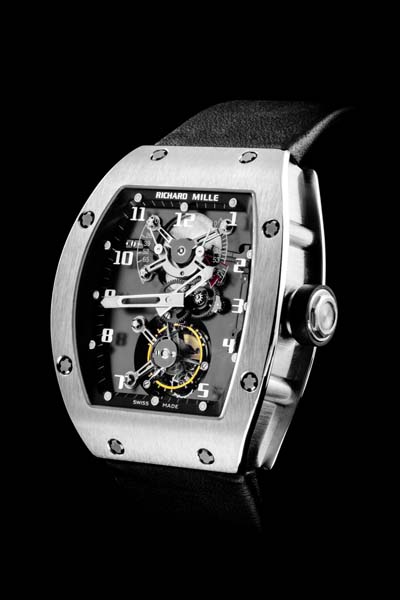
What is a tourbillon anyway?
Before looking at all these developments, it’s worth giving a basic definition. The tourbillon involves housing the regulating organ (the balance-wheel, balance-spring, pallet-lever and escape-wheel) within a structure known as the cage or carriage, which is itself rotated. The aim of this rotation is to place the balance-wheel in a variety of positions: since a regulating organ’s oscillation speed, power, and the friction along its shaft are all affected by gravity, its spatial orientation alters its chronometric behaviour. To ensure the regulating organ doesn’t stay in a particularly favourable or unfavourable position, the tourbillon keeps it constantly moving. In short, it’s a machine that evens out the errors caused by such positions: the tourbillon’s job is to adjust the behaviour of the regulating organ to an average position. The faster the cage rotates, the faster the variety of positions adopted.
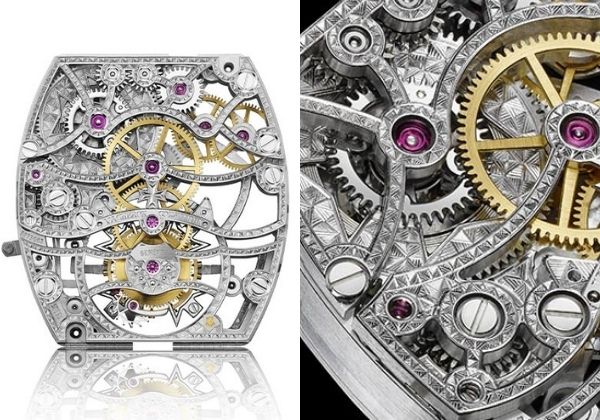
In general, tourbillons rotate once a minute, enabling them to indicate seconds. In addition to rotation, watchmakers have begun to play with other factors: the balance-wheel frequency, the orientation of the cage in the plane of movement; the number of axes around which it turns. These different variables and their related potential for inventiveness have transformed a single complication into many different specialities. The breadth of this potential is evidenced by the distance between, say, a Ref. 5101 from Patek Philippe – a brand which keeps all its highly conventional tourbillons well out of sight to the rear of its watches – and Greubel Forsey’s Quadruple Tourbillon which features two biaxial tourbillons, each with an axis at a 30° incline; or between the prophetic, ultra-sporty style of Richard Mille’s RM 001 and the uninhibited reinterpretation of ultra-technical classicism to be found in pieces by Bovet.
Refinements
Another characteristic of the tourbillon is that it’s impossible to say whether or not it’s a complication. Strictly speaking, a complication is an indication, whereas tourbillons don’t actually indicate anything; they are simply part of how the regulating organ works. But in the 2000s, orthodox definitions were gradually deconstructed amid the diversification of complications, sheer inventiveness, and the spread of top-of-the-range watches, none of which were very compatible with dictionary definitions. Indeed, the tourbillon’s iconoclastic identity, and the Johnnycome-lately boom in diversity it spawned, make it a metaphor for watchmaking as a whole. To the casual observer, the world of watchmaking appears very uniform, inhabited by just a few brands. To the untrained eye, everything looks the same, whether it’s at a distance or even close at hand. But with the right focus, everything becomes denser and more complex, like a drop of seawater observed through a microscope: it’s absolutely teeming with life. Often seen as little more than a technical solution, the tourbillon has turned out to be an entire field in its own right – and a springboard for notoriety, prestige, and sales. The trajectory taken by the tourbillon resembles that of the entire sector, and is something of a scale model of the industry as a whole. It has its specialists – such as Greubel Forsey, taking tourbillons to new heights of technical achievement in timekeeping and fine workmanship, or even Jaeger-LeCoultre with it’s Triptyque, the first watch to have a détente escapement within a tourbillon - as well as its dilettantes. It has its own low-cost versions (such as Frederique Constant’s Highlife Tourbillon), as well as extremely expensive ones (the chosen path of Vacheron Constantin, whose tourbillons embody the last word in finishes). It can fulfil any role in a watch, from technical or timekeeping performance to styling – or, in its more basic versions with an outsourced, generic movement, play nothing more than a walk-on role.
Branching out
While the tourbillon was originally a response to a single issue, and long remained that way, it has become subdivided into many different categories. Early examples include the flying tourbillon invented by Alfred Helwig and Bonniksen’s karussel, a variant with subtle technical differences. In the 21st century, the tourbillon has become a world in its own right. Cyrus offers flat, sloping and vertical tourbillons; Roger Dubuis has singles and doubles, Antoine Preziuso has triples, Greubel Forsey, the quadruple tourbillon.
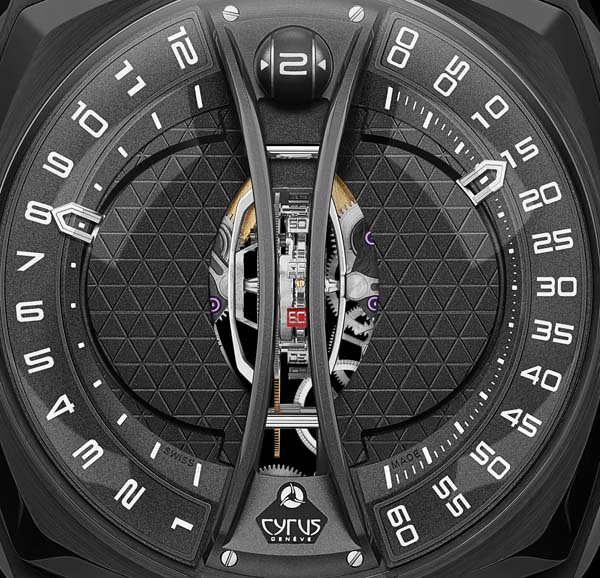
They can have one, two, or three axes (as with Thomas Prescher), and frequencies of 2.5, 3, 3.5, 4 or even 5 Hz from De Bethune and Zenith. A cage rotation can take one minute, four minutes, or even five seconds (such as in Franck Muller’s Tourbillon Rapide) – or, at the other extreme, one hour, with Ulysse Nardin’s prophetic Freak. The cage can have two bridges (the classic tourbillon); a single bridge (the definition of the flying tourbillon, taken to extremes in the cases of the Jaeger-LeCoultre Hybris Mechanica and Carl F. Bucherer’s peripheral tourbillon) not forgetting Bovet’s speciality, a bridge concealed halfway along the shaft. Tourbillons can be small, medium-sized, large, or giant – the latter being the hallmark of Kerbedanz. Their axis of rotation can be centred on that of the balance-wheel; offset, as in Montblanc’s Exo Tourbillons; or peripheral, as in Cartier’s Astrotourbillon. Omega and Hysek locate their tourbillons centrally; the majority put them at 6 o’clock; Blancpain has them at 12 o’clock, and Breguet, at 5 o’clock.
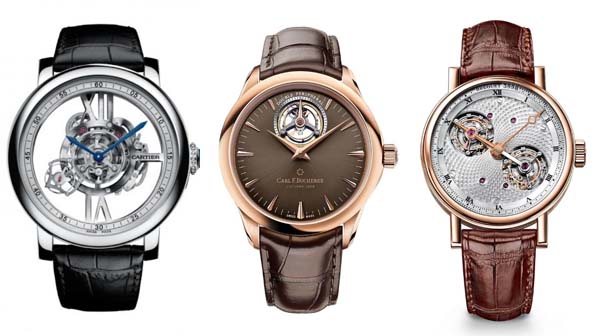
Panerai and Patek Philippe hid them from sight; others put them on display, sometimes brought even closer into view beneath a specially shaped dome, as is the case for Vianney Halter Deep Space or more recently MB&F’s Legacy Machine Thunderdome. And today, tourbillons feature in every type of watch: sporty chic, extreme sport, vintage, classic, dressy, men’s, women’s, jewellery, skeleton and ultra slim.
Zeitgeist
Several factors help account for the particular destiny of this complication, coinciding as it did with the arrival of the modern watch. For one thing, tourbillons were able to emerge from the wilderness of inaccessible complexity, the manufacture of their components greatly facilitated by digital machining. Tourbillons have at least 50 specific parts, some of them weighing only a few hundredths of a gramme; they are intricately shaped and manually finished. In addition, the era itself was a powerful stimulus for novelty, high-tech, prestige, and differentiation.
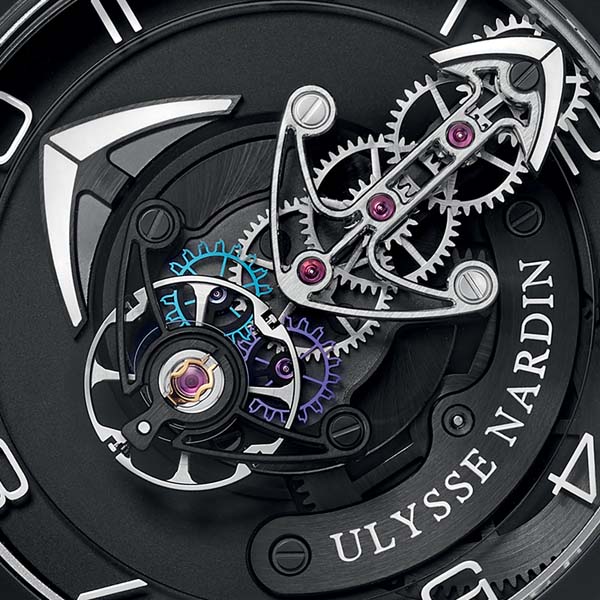
It also saw the emergence of highly talented watchmakers, many of them independents, marshalling their extensive knowledge to resurrect various traditions; the fact that these had fared badly in the 1980s and 90s also meant there was an opportunity for a revival of mechanical watchmaking on a large scale. And of course tourbillons had the benefit of movement. Their rotation is a performance: a ballet that symbolises the passing of time far more effectively than the oscillations of a balance-wheel, even when the latter are made visible through an opening in the dial. At a very early stage, those that had succeeded in making tourbillons decided to show them off, placing the regulator clearly in sight, just beneath the dial, visible through a dedicated window.
